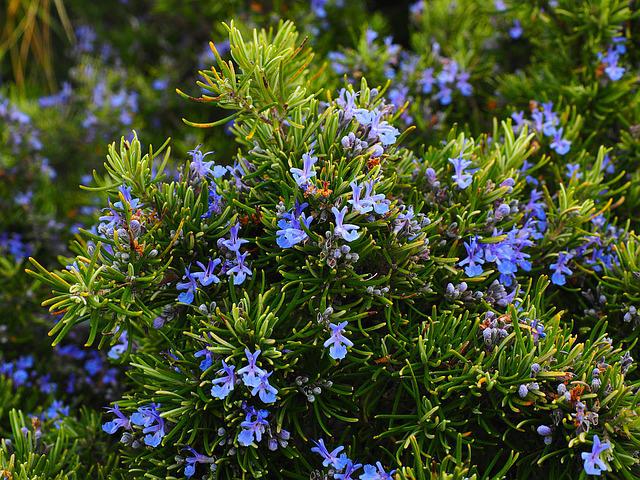Author: Ghulam Abbas Narejo, Research Associate based at Pakistan Museum of Natural History, Islamabad, Pakistan.
Two years ago, in 2020, the entire world was engulfed in the COVID19 pandemic, which is caused by the severe acute respiratory syndrome coronavirus SARSCoV2. As everyone knows by now, the most common symptoms of this disease are fever, dry cough, fatigue, and headache, and can turn into a progressive and severe pneumonia. However, evidence suggests that COVID-19 patients may also develop a variety of neurological complications. Thousands of people died each day because there was no known treatment. The search for treatments and vaccines for this novel coronavirus disease was on.
Desperation in the community, particularly among middle- and low-income communities who are particularly hard hit by the economic consequences of forced lockdowns, sparked a surge in interest in alternative medicinal plant-based treatments (Lim et al., 2021). Plants have been utilized in medicine from the beginning of time. For years and decades global studies have been conducted to test their efficacy, with some of the findings leading to the development of plant-based medicines (Lim et al., 2021).
There are some 50,000 estimated plant species with medicinal properties being used at a global level (Schippmann et al., 2002) and WHO estimates that traditional medicine is used by 80% of the population in underdeveloped nations (WHO, 2019).
Many misconceptions and misinformation about the use of medicinal herbs to cure or prevent COVID-19 have propagated over the globe since the pandemic started. The growth in unfounded efficacy claims of various interventions appearing on social media demonstrates this (Cinelli et al., 2020). Scientists and researchers from all over the world were allowed/forced to write evidence summaries evaluating the potential of complementary therapies in COVID-19 management based on the inquiries they received (e.g. inquiry on antiviral, anti-inflammatory propertiees of Nigella sativa, Vernonia amygdalina, Azadirachta indica, Eurycoma longifolia).
Natural products have been in use since ancient times, and many have been demonstrated to be beneficial. Crude extract or pure compounds isolated from medicinal plants and/or herbs such as Artemisia annua, Agastache rugosa, Astragalus membranaceus, Cassia alata, Ecklonia cava, Gymnema sylvestre, Glycyrrhizae uralensis, Houttuynia cordata, Lindera aggregata, Lindera aggregata, Lycoris radiata, Mollugo cerviana, Polygonum multiflorum shown a preliminary promising anti-coronavirus inhibitory effect
Several molecules have been isolated from plants, including acacetin, amentoflavone, allicin, blancoxanthone, curcumin, daidzein, diosmin, epigallocatechin gallate, emodin, hesperidin, herbacetin, hirsutenone, iguesterin, jubanine G, kaempferol, lycorine, pectolinarin, pectolinarin, phloroeckol, silvestrol, tanshinone I, taxifolin, rhoifolin, xanthoangelol E, zingerol, etc. isolated from plants could also be potential COVID19 drug candidates against COVID‐19
(Adhikari et al., 2021)
Researchers in Nepal reported the popular use of more than 60 plant species belonging to 36 families for COVID-19 management (Khadka et al., 2021). Similarly, traditional medicinal plants are reported as being used against COVID-19 by the general population in countries such as China, India, Bolivia and Morocco (Maldonado et al., 2020; Grigore et al., 2020). At the same time, results of Villena-Tejada et al (2021) revealed that most of citizens in Peru used eucalyptus, ginger, spiked paper, garlic, and chamomile as a mean for prevention and treatment of COVID-19.
Regarding use in a medical environment by medical personnel, traditional herbal medicine appears to have shown some promising outcomes in lowering the rates of mild, severe, and overall death, as well as minimizing the length of total sickness. Herbal medications may have antiviral, anti-hypoxic, immune-regulatory, and anti-inflammatory properties when combined with conventional medicine. Similarly, traditional treatments are utilized in parallel with modern medicine and immunizations to treat COVID-19 (Luo et al., 2020).
References
Adhikari, B., Marasini, B. P., Rayamajhee, B., Bhattarai, B. R., Lamichhane, G., Khadayat, K., Adhikari, A., Khanal, S., & Parajuli, N. (2021). Potential roles of medicinal plants for the treatment of viral diseases focusing on COVID-19: A review. Phytotherapy research: PTR, 35(3), 1298–1312. https://doi.org/10.1002/ptr.6893.
Cinelli, M., Quattrociocchi, W., Galeazzi, A. et al. The COVID-19 social media infodemic. Sci Rep 10, 16598 (2020). https://doi.org/10.1038/s41598-020-73510-5
Grigore A, Cord D, Tanase C, Albulescu R. (2020) Herbal medicine, a reliable support in COVID therapy. Journal of immunoassay & immunochemistry. 41(6):976–99. https://doi.org/10.1080/15321819. 2020.1862867 PMID: 33356860
Khadka, D., Dhamala, M.K., Li, F. et al. (2021) The use of medicinal plants to prevent COVID-19 in Nepal. J Ethnobiology Ethnomedicine 17, 26. https://doi.org/10.1186/s13002-021-00449-w
Luo L, et al. (2020) Analysis on herbal medicines utilized for treatment of COVID-19. Acta Pharm Sin B. 10(7):1192–204.
Maldonado C, Paniagua-Zambrana N, Bussmann RW, Zenteno-Ruiz FS, Fuentes AF. (2020) La importancia de las plantas medicinales, su taxonomía y la búsqueda de la cura a la enfermedad que causa el coronavirus (COVID-19). Ecología en Bolivia. 55(1):1–5.
Schippmann, U., Leaman, D. J., & Cunningham, A. B. (2002). Impact of cultivation and gathering of medicinal plants on biodiversity: global trends and issues. Biodiversity and the ecosystem approach in agriculture, forestry and fisheries. https://www.fao.org/3/aa010e/AA010E00.pdf
Villena-Tejada, M., Vera-Ferchau, I., Cardona-Rivero, A., Zamalloa-Cornejo R., Quispe-Florez M., Frisancho-Triveño Z., et al. (2021) Use of medicinal plants for COVID-19 prevention and respiratory symptom treatment during the pandemic in Cusco, Peru: A cross-sectional survey. PLoS ONE 16(9): e0257165. https://doi.org/10.1371/journal.pone.0257165
WHO. (2019) WHO global report on traditional and complementary medicine 2019. World Health Organization.






